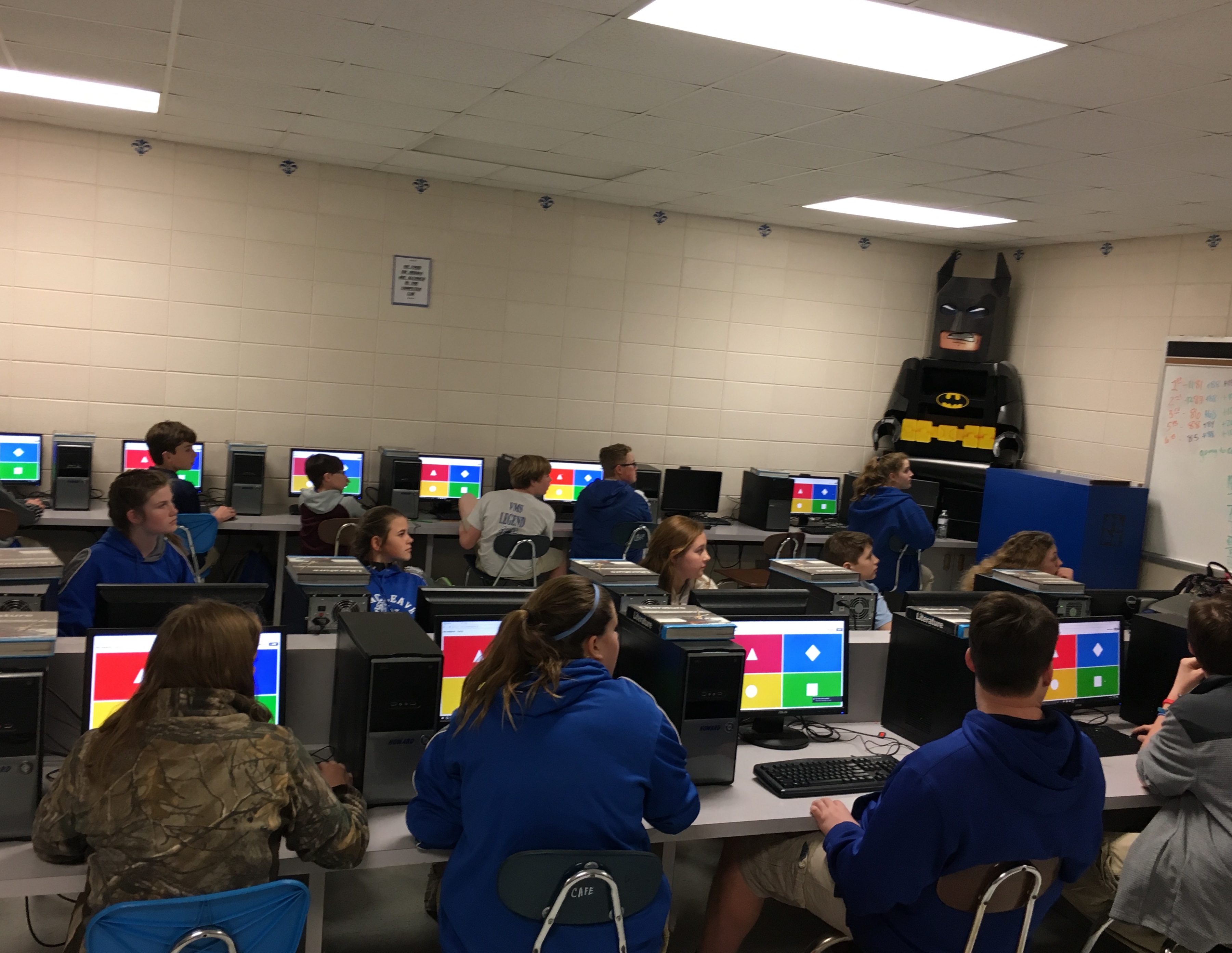Recently, we spoke to hero teacher Chase Chatfield who is a real champion when it comes to facilitating student-led learning in his cross-disciplinary class! Keeping learners at the forefront in class, Chase helps them train superpowers such as discussion, analysis and teamwork. In this article, he shares deeper insights into that learning journey and tips for creating top-notch kahoots.
Student feedback is vital from the start. When I started with Kahoot!, I only used it as a fun break in class for students, and hadn’t explored other possibilities. Little did I know how powerful the platform can be as a collaboration tool! Actually, it was my students’ feedback that motivated me to find new ways to use Kahoot! in class.
I began by creating simple kahoots with “What is X?” type of questions. Next, I progressed to creating “find, solve, and determine” quizzes. These questions showed me which of my students could solve the problem. However, then I realized I should reconsider the timing for questions, because solving the expressions isn’t a guessing game.
I asked my students how they felt, and their feedback was eye-opening. With more complex problems or expressions, they felt under pressure to answer in time, trying to be faster than everyone else. It looked like the competitive element had to be toned down a notch. Therefore, I took the time to come up with a different system.
Progressing through learning with Kahoot!
Teaching new content and reinforcing it, I start simple and then gradually increase difficulty as we move further. Here’s how we do it over the course of three days:
When introducing new topics, I now start the game with no points to warm up. This intro game is a survey to test prior knowledge, featuring mainly straightforward yes/no questions, no trickery in answers. I also include a “prove it” question or two – i.e., either asking for the definition, or using an image to illustrate info related to the previous question.
I found that students would always attempt to give a correct answer even if it is a guess. This did not give me an accurate representation of their knowledge. For example, if a student said they didn’t know the vocabulary word, how could they correctly identify a definition or example? It lead me to include “I don’t know” as an answer option. For my students, this option gave a safe way out, and for me – a better snapshot of the actual knowledge retained.
I then played the same intro kahoot the next day and the scores were much higher. During the second play, one student in particular said he felt really smart, because he had retained the knowledge from the first play of the kahoot. Great progress!
Over the next couple of days, I gave traditional instruction to the content from the intro kahoot. I closed out day three with a kahoot that asked students to identify and solve expressions. It starts with “easy”, true or false questions that cover the core information needed to complete the remaining questions. If a student answers something wrong, they can make a mental adjustment to be applied to the other questions. Then, once I reach expressions to solve, I start with entry level versions and then work towards more challenging examples.

Our top tips to create a student-led kahoot
As teachers, we’re used to being in the driver’s seat in the classroom, but believe me, letting your students take the lead does magic! Take time to listen and watch students, and they will guide you how to teach content in the most efficient way. The following are my students’ tips (some spoken, some not) for a fun and productive kahoot!
1. Give them all the time in the world
However long you – the teacher – think it should take a student to solve a problem, triple it! If students do not think they have enough time to answer a question, they give up and guess. If you give them enough, they will get used to the practice and apply themselves academically to the game.
Student feedback:
“I may not need a lot of time, but I feel smarter when I finish before the timer runs out.”
2. Break up the questions
This is directly related to the first tip. Think about the number of steps it takes to solve a problem, and use that many questions. E.g. if a question requires students to find a missing angle measurement, I have them solve for x first. If a student is incorrect here, the correct answer is provided and helps the student move onto the next step with more accuracy. To solve the next question, students can then apply the answer from the previous one.
Student feedback:
“When the questions are broken up it helps me check my work as I go along. I hate doing all that work and not knowing if I’m doing it wrong.”
3. Repeat kahoots to reinforce knowledge
Play the same kahoot more than once. Your students will want to, trust me! Take advantage by having them compete against themselves in Ghost Mode. There is nothing better than beating your own high score!




